|

|
-
For a while now I have been convinced that the sound that best evokes the zeitgeist of this moment is music for a parade, something celebratory-but-rueful, a melancholy protest dance for the streets and our living rooms. The sound is somewhere between a disco thump and a dirge, a rambunctious carnival pulse and a funeral march, reflecting the tumultuous upheaval, ambivalence, and sorrow swirling around us as we try to safely coalesce.
Contained in this sound is the longing to feel the joy of collective movement, all together once again. Orchestre Tout Puissant Marcel Duchamp presents a good case for my thesis. We're OK. But We're Lost Anyway manifests this concept with a rhythmic, droning, layered musical montage of jazz, pop, Celtic, African, and Latin beats, soulful lyrics, and the kinds of sonic collective build one only gets with large groups playing as an ensemble, in real time.
Join Martha Willette Lewis in exploring their strange and wonderful sonic world.
|
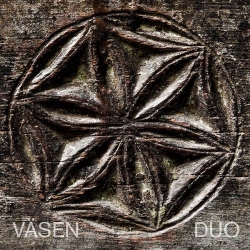
|
-
Väsen is one of the best known names to come out of the Swedish folk tradition. They have been around, in one form or another, for over thirty years, appearing at different times as a trio, a quartet and a quintet. In their latest manifestation they have trimmed themselves right down to a duo, Olov Johansson playing two different types of nyckelharpa and a silverbasharpa and Mikael Marin on electric viola and violoncella da spalla, or shoulder cello.
The album, avoiding any cryptic cleverness, is simply called Duo and makes for a very good listen. The sixteen tracks are a mixture of original compositions by the two musicians, traditional Swedish tunes and three pieces composed by the celebrated nyckelharpa player Erik Sahlström.
Mike Adcock finds these duets to feel like an intimate conversation. Listen in.
|

|
-
There are a capella groups, and then there’s Kongero. The quartet of Swedish women create wonderfully crisp, pure music on Live In Longueuil, recorded on tour in Canada. It’s a celebration of the band’s 15 years together, and what a birthday present for anyone with ears to hear. On a mix of traditional and self-composed pieces, they shine with a crystalline brilliance... The arrangements are intricate, ranging from the softly delicate to the sweetly robust, always challenging and always satisfying.
Chris Nickson listens to the voices. Join him.
|
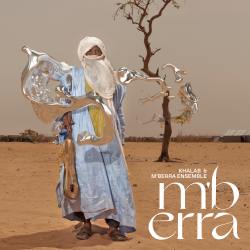
|
-
Upon hearing the pastiche of sound of M’Berra by Khalab and M’berra Ensemble, you might begin to wonder what it’s all about, as it’s replete with seemingly random conversational sounds in various tongues, spliced with French; percussion phrases of compelling mystique; primordial stringed sounds; electronic inputs that waft, crackle, crinkle or shock; and soulful melodies. What M’berra is about is the soundscape of life in the refugee village of M’berra, in Mauritania just over the border with Mali It has been home to people upturned by ongoing raids and armed conflict in the Sahel since the late 1990’s. M’berra Ebsemble tap into the inevitable urge of camp dwellers to make music, a first line of comfort in times of loss and grief, fear and panic, in which to seek personal solace and confirmation of group identity. And a stirring hour or two in which to forget.
Due at least in part to the Islamist pogroms against music makers in the Sahel, the M’berra camp has hosted some notable musicians. Apprised of them and their plight, techno explorer Raffaele Costantino, a.k.a. Khalab brought his electronica there and embarked on an ambitious venture to provide them a forum in which to perform and record in community that would, at the same time, give listeners far from the camp an inkling of life there. Challenged to integrate the music and culture of Northern Malians with that of the semi-nomadic Tuaregs, Khalad was able to finesse the fruits of on-site recording under desert conditions into a silky studio achievement of both brazen and suave magnitude. It’s worth noting that Fadimata Walett Oumar (“Disco”), the founder of Tartit, a woman-dominated Tuareg band who have seen success worldwide since the ‘90s, gives an eloquent testament here to the music and its makers.
Carolina Amoruso delves into new sounds of the Sahel.
|

|
-
The members of Eva Quartet, formed in 1995, were all members of the famous ensemble, Le Mystère Des Voix Bulgares, but they came together through their mutual involvement in the Orthodox Church, and in their quartet eschewed the traditional folk costumes for black-dressed elegance and a presentation that moved them into a more classical context, while keeping the traditional-rooted uniqueness. Minka is their first release since 2012... This is clever, meticulously made music, as is that of a classical vocal ensemble, but the voices yearn, surge, linger, interlock, drone and counterpoint, and on the up-tempo pieces fizz and chatter, in ways that no Western-classical ensembles, even the progressive ones, match in style or sound.
Read Andrew Cronshaw's full review and listen to some samples of the music.
|

|
-
Aire! is their first album as a duo, but individually violinist and singer Antía Ameixeiras and chromatic accordionist Sabela Caamaño have been in leading bands and collaborated with many Galician musicians... There's a special communication going on here. The dancing interplay of their instruments expand on melodies, drawn mainly from Galicia but from elsewhere too, and three Ameixeiras compositions, in a magnificently inventive way, filling them with airy swirl... The fine singing has their region's characteristic joyful blend of cherishing warmth and strength.
Read Andrew Cronshaw's review and listen to some of the songs.
|
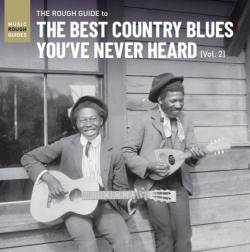
|
-
Thanks to the scholarship and massive reissue campaigns of labels such as Yazoo. Mamlish, Biograph, Wolf, Document, and Herwin... who recognized there was a younger generation of vinyl hipsters who hadn’t already discovered the joys of the 78 RPM era, the hydra-headed beast known as “the blues” has been well-catalogued, reissued, re-discovered, re-contextualized, and re-curated... So what on earth is the Rough Guide doing spitting these recordings out once again in the early decades of the 21st century, nearly 100 years after many of the tracks here were recorded? Surely, hardcore blues nerds already have these songs, either thanks to reissues on the above-mentioned labels, or perhaps hidden in the worn grooves of original shellac 78s coveted like treasure. One can only suspect that the Rough Guide has its own crowd.. and for interested folks, The Rough Guide To The Best Country Blues You've Never Heard does not disappoint. It also does a fine job of allowing us to recognize that the term “blues” is a catch-all for music with deep roots into the changes occurring in music and society going at least into the last decades of the 19th century.
Bruce Miller shares some thoughts and tunes.
|

|
-
An album called Silence purporting to have well over an hour's worth of music certainly had me wondering what to expect. Any initial silence is broken by pressing play, after which instead you'll hear a low-level synth drone over which Norwegian jazz pianist Tord Gustavsen adds some tentative introductory piano notes with his right hand. He is then joined by kemenche player Derya Turkan, percussionist Omer Arslan and finally Coskun Karademir, who plays two Turkish long-necked lutes on the album, the kopuz and the bagluma. After three minutes of slow tempo improvisation with each musician setting out his stall, Gustavsen introduces the melody "Gondol," a 19th century piece composed by an Ottoman sultan, which then forms the basis of some rich collective playing.
Mike Adcock explores the spaces in between the notes.
|

|
-
It might be easiest to view Evocazione E Invocazioni by Linguamadre member Davide Ambrogio as an audio play with music. That might not be his intention (he says it's centered "on the idea of Sound, in its aesthetic and ecstatic dimension. In traditional oral music, songs and sounds appear in the context of a ritual"), but it gives a continuity to these pieces sung in the Calabrian dialect of southern Italy. The music might be his, but the lyrics come, in one form or another, from the oral tradition. The magic is in how he's put them all together.
Read Chris Nickson's review and hear some of the music.
|
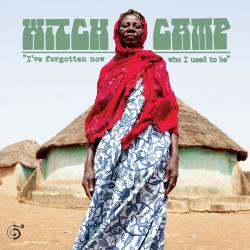
|
-
Netherlands-based Makkum Records has been busy these last few years releasing compilations of Ghanaian masters of the Northern region’s two-stringed lute, the kologo. Ayuune Sule’s sole track featured on Makkum's This is Kologo Power compilation shows the relentlessness of his approach. His vocals, often shouted with response, are underpinned by a constant buzzing flurry of repetition, demanding surrender from listeners. And while his new release, Putoo Katare Yire, the second international release devoted to him, has examples of his solo playing, most of this is slathered in modern pop trappings, such as auto tune, synthesized rhythms and other production methods that will frustratingly date this record even as they may also help Sule expand his much-deserved global audience.
From the same country but arguably at the opposite end of the musical production spectrum from Sule’s latest sits Witch Camp: I've Forgotten Now Who I Used to Be, a collection of musical snippets recorded by women confined to places where they find community and safety after they have been accused of witchcraft due to physical or mental issues beyond their control... the tracks here, often quite short, are instant compositions using whatever sound-making devices are available, played by people who may not have otherwise been musicians. The results, once again, are astounding. Corn husks, tea pots, tins cans, and tree limbs all play roles as sound sources here, as do a capella vocals and more traditional instruments.
Bruce Miller reviews these two contrasting works from modern Ghana.
|

|
-
Originating from South Sudan and now resident in Australia, Let Me Grow My Wings is Ajak Kwai's fifth album to date, a highly personal set of twelve songs, sung in English, Arabic and Dinka. The multi-award-winning composer Jan Skubiszewski lends his production and playing talents, as do Melbourne Ska Orchestra frontman Nicky Bomba, Simon Lewis (Amanaska, Pravana), guitarist Chris Basile and a host of other notables. This record has been a long time in the making for Kwai, who also works as a community promoter assisting fellow migrants as well as hosting her own weekly radio show. “My experiences in Australia inform my songs and my music,” she states. “This album is a collection of those hopes and dreams for an integrated future where we are one and can share and be accepted for what my community has to offer.”
Read more and listen to the music in Chris Wheatley's review.
|
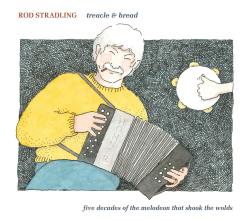
|
-
Rod Stradling and his melodeon have spent decades being everywhere. He was integral to the formation of a host of important English dance bands, including Oak, The Old Swan Band, Phoenix, and later The English Country Blues Band, Edward II & The Red Hot Polkas, and Tiger Moth. Treacle & Bread presents a nice look at the Stradling history, potted nicely by fellow musician and editor of the late fRoots Magazine, Ian Anderson. It's a bountiful helping of straight ahead dance music and innovative, more electric musings. It's twenty one tracks of English dancing pleasure.
Cliff Furnald reviews.
|

|
-
The mass extermination of Armenians a century ago was one test of their seemingly indomitable spirit; another is the fact that contested areas of Armenia were under attack by Azerbaijan while Hokin Janapar was being recorded, and the work was completed in the face of that potential danger. The musical instrument through which Arsen Petrosyan articulates his feelings is the duduk. The double reed woodwind, in addition to being Armenia’s signature wind instrument, has snaked its way into the mainstream through its use on various movie and television soundtracks. Djivan Gasparyan remains the name most closely associated with the duduk, but keep an ear out for comparative newcomers like Petrosyan.
Tom Orr shares his thoughts and the music.
|

|
-
The Nordic countries, particularly Norway and Finland, are quite the place for innovative accordion playing, the sort that, chances are, even an accordion-hater would find remarkably attractive. Frode Haltli is one of Norway’s prime examples. Since the early 2000s his projects, both solo and collaborative, have spanned new-classical, avant-garde, traditional, and Norway’s own special approach to what might be described as jazz but is a misty, atmospheric thing that has little or no connection to the USA.
Avant Folk II pulls it all together with his ten-member ensemble... Haltli describes how such a large ensemble manages to maintain improvisational freedom. “In Avant Folk we use processes from folk music: I present a simple material to start with, that all musicians learn by ear. This way, without any scores at all, we all get a common feel of the phrasing and the rhythms, with flexibility and freedom in further elaboration of the musical material.”
Listen to tracks from the album and read Andrew Cronshaw's full review.
|


|
-
Canzionere Grecanico Salentino have 46 years as a band behind them, now well into the second generation of the Durante family’s leadership. Formed to preserve and explore the music from their native region in the heel of Italy, they have helped take the pizzica and tarantella to a global audience... Their latest album is the proverbial 'all killer, no filler.' There is not a wasted moment. The sound is richer and fuller, yet it also manages to be more focused, sleeker and stripped back. They have taken everything they have done in the past and turbocharged it. This is urgent music, knocking on your door and demanding to be heard... All the songs are new, but so deeply rooted in the dirt of home that they feel unearthed. Merdiana is not a reinvention of the tradition, but a new layer of it.
Chris Nickson takes you on a global adventure in Salento.
*

"We have lights even at midnight. We can see everything but we can't see the sky.
So we basically are estranged from contact with natural time."
While Meridiana is not a “pandemic album,” its creation was affected by the quarantining, and its central theme - our relationship with time - certainly resonates with the introspective time with which we all have been confronted. Months before the Covid-19 virus hit Italy, the group members had decided their next album would explore time from different perspectives. Then they decided the Italian word for a sundial should be the title and organizing principal of the album with 12 songsone for each hour on the clock’s face. “The sundial uses light and shadow to measure time. So for us meridiana is a symbol for a reflection about time, about our relationship with time.”
Read Mauro Durante's RootsWorld interview with Mart Lipp:
|

|
-
Natacha Atlas' The Inner & The Outer is a bold and unusual piece of work right from the beginning with “The Outer,” where the glitching chopping-up of Alcyona Mick’s piano line had me convinced there was something wrong with the audio file playback, and anyone buying the limited-edition physical CD will be checking their CD player. But when the rhythm track kicks in and Atlas’s vocal floats over it, in a mix of English and Arabic in her distinctive Arabic vocal style, it becomes clear that it’s supposed to be like that, and appropriately very unsettling it is, expressing the ‘manifestations of fear, mistrust, anger, confusion at the discomfort experienced in a world where we no longer know how to trust our own realities.'
Andrew Cronshaw finds it is like no other Atlas release ever.
|

|
-
Let’s start by saying it’s fruitless trying to classify Samm Bennett. Don’t even think about it. He’s a genre of one, crazily prolific – both albums - I Need To Talk To You and Songs About Time And Your Uncle appeared in May and he’s released more music since then – and with a decidedly, gloriously skewed vision of the world. Originally from Alabama, he migrated to the North East, and now makes his home in Tokyo. Some of the 22 songs here have previously come out as singles, but there’s still plenty of new material. While none of it is especially complex, there’s a level of intensity to the work that often borders on the manic; it’s definitely not easy listening.
Chris Nickson tries to keep up, and we've added a new video song published just this week,
|
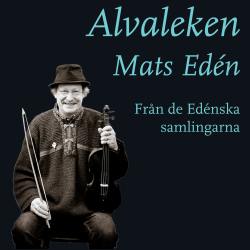
|
-
There are a lot of albums of entirely solo fiddle from Norway and Sweden. That’s because the essence of traditional fiddling, particularly in Norway, is a solo thing, accompanied only by the player’s foot-tap... Norwegian and Swedish solo fiddling has become a high art, with an often complex-sounding repertoire that is nevertheless mostly music for dancing, with a wide range of rhythms and forms. Mats Edén, from Värmland, in Sweden but close to the Norwegian border, is in both countries a very well-known, admired and respected player and prolific composer. Among much else he’s a founder and continuing member of the very long-established and influential band Groupa. This solo work, Alvaleken was simply self-recorded at home and focuses on those of his many compositions that show his strong affinity with Norwegian music, played on four different fiddles.
Read Andrew Cronshaw's review and listen to some of the music.
|
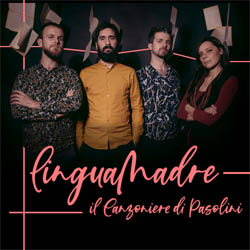
|
-
Linguamadre are Duo Bottasso (Nicolò on violin and Simone on organetto), the Friulan singer Elsa Martin, and the singer and multi-instrumentalist Davide Ambrogio, who wrote "Sa Limba" with Simone Bottasso. he lyrics of were found in Chiaramonte, a village in the northern part of Sardinia. It's a simple and authentic lullaby to a baby in the mother's womb written in Sardinian language.
See a performance of the song, including an English translation of the lyrics.
*
"One must always protect the dialects because they contain the essence of the history and culture of our country." - Roy Paci
Paci's words could serve as a statement of purpose for Linguamadre. This new Italian group has released its first album, Il Canzoniere di Pasolini. All but one of the nine tracks have been adapted from among the 800 poems and traditional songs collected by the poet, novelist, and filmmaker Pier Paolo Pasolini and published in his 1955 collection, "Canzoniere Italiano" (Italian Songbook)... Linguamadre eschews the folkloric, instead drawing on Italian folk music, jazz, and electronics to create contemporary arrangements that are as mysterious, unpredictable, and often as strange as the poems and lyrics themselves.
George de Stefano explores Linguamadre's new, vibrant interpretations of the poems and lyrics collected by Pasolini sixty-six years ago.
|


|
-
I have been a serious fan of African guitarists, particularly from the north and west of the continent, for a very long time, and save for Boubacar Traoré, I cannot think of an artist who so immediately grabbed my attention and amazed me as Boubacar 'Badian' Diabaté. There is a fluid quality to his playing, a sense of casual grace that seems so simple on the surface. You hear the song, you feel the rhythm, and it is only as you are pulled in deeper that you begin to see the expertise of a master craftsman... This is a primarily solo guitar recording, with some occasional light double tracking, his brother Manfa contributing some guitar on just a few tracks, and some percussion by Baye Kouyaté on one other. There's no pyrotechnics, no flash, just a series of perfect songs on Mande Guitar. Read your editor's review and listen to some of the music.
Mande Guitar is our Music of the Month selection for July.
Find out more and subscribe to Music of the Month, or get just this one CD and help support RootsWorld.
|
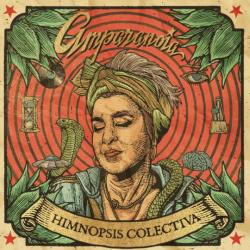
|
-
Amparo Sanchez, a Spanish diva with traction throughout the Latin world, has spent decades making merry with words set to a kaleidoscope of musical influences. In this same vein, and after a lapse in recording of over six years, we find in Mi Génetica, a reconfiguration of Sanchez’ flagship group, Amparanoia (An amparo is a refuge or shelter; the suffix needs no translation), and a generous serving of invited players, adding oomph with a tuba on two tracks, punched up percussion and a more pronounced electric guitar sound. In good cheer, the musicians, known together as the Himnopsis Colectiva, take us on a romp through selected rhythms from the Hispanic world and beyond: from cumbia to chicha, to flamenco, to sounds from the Maghreb, Jamaican reggae and more.
Sanchez is a one-of-a-kind artist, inescapably kindled by flamenco; she is a self-proclaimed cantaora with the soul of flamenco infusing her identity. At the same time she’s been schooled in the sway of the Caribbean, taken extended stays in Mexico, picked up the brassy sounds of the Balkans, and is beholden to the US for the blues and Billie Holiday. With a voice that’s sensual and imperious, bold and gravelly, she lets you know immediately she’s a woman to reckon with, a #MeToo champion long before the movement coalesced.
Read Carolina Amoruso's review of Mi Génetica and listen to some songs.
|

|
-
George De Stefano takes you on a cross-Atlantic journey through the music of Anna Cinzia Villani, in an encounter between her native territory, the Salento subregion of Puglia and its now world-famous pizzica, and the music associated with the Afro-Brazilian martial art, capoeira... On Ulìa -the title means both "olive" in Salentino dialect and "I would" or "I would like" - Villani is backed by Alessandro Lorusso on guitar, berimbau, and several Afro-Brazilian percussion instruments; Massimiliano Peró, accordion, tamburello, and vocals; Francesco De Donatis, tamburello, bendir and duff, two Middle Eastern hand drums, and vocals; and Brazilian guest artist Mestre Canhão on berimbau, vocals, and two of the main percussion instruments used in capoeira, pandeiro and atabaque.
Take the journey into this unique collaboration of styles and artists.
|

|
-
Nong Voru is a collaboration between Ghanaian gyil (xylophone) wizard Alfred Kpebesanne and Brittany
Anjou, the Brooklyn based pianist, vibraphonist and improviser , perhaps best known for her jazz performances on acoustic piano. However, because Anjou has also worked way outside of jazz with the likes of former members of naïve-avant geniuses The Shaggs or the pop-noir of Elysian Fields, it should be no surprise that she has found yet another collaborator in Kpebesaane... And while her presence appears subtle at first, with minimal electric keyboards underpinning Kpebesaane’s grooves, by the time the track “The Women are Taking Over the Men” appears, Anjou, as well as a bassist and kit drummer are the driving force...
Read Bruce Miller's full review and listen to tracks from the recording.
|
Support RootsWorld. Subscribe to Music of the Month.
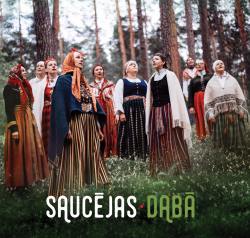
|
-
Saucējas is the female traditional polyphonic vocal group of the Latvian Academy of Culture... but their live performance is far from dull or academic, and their songs, while learned from archive recordings and their own fieldwork, and using traditional techniques and harmonies, emerge their own expression.
It might appear just a conceptual decision to record in natural environments, but apart from undoubtedly being a lot more inspiring and fun than standing in a studio, as Saucejas leader Iveta Tale describes in the CD booklet, singing outdoors in resonant places, particularly on a hill or in the forest, was a strong aspect of the tradition and often referred to in people's reminiscences and in the lyrics of the songs themselves.
Daba, a double CD with sixty traditional songs recorded in various outdoor locations, is a remarkable piece of work.
Read how they recorded, and listen to what they recorded in Andrew Cronshaw's review.
|

|
-
Archives is an album made by ghosts. Their voices, their instruments, the tapping of their feet…field recordings of French-Canadian people from the 1940s and ‘50s who live on here, lovingly brought back to life by multi-instrumentalist and composer Cédric Dind-Lavoie. Taking archive material and using it as the framework for new music could be an academic exercise, but that’s never the case here. The humanity of the original artists shines through...
Read Chris Nickson's review and listen to some tracks from this unique sound collaboration.
|

|
-
It's not a recognized genre as far as I know, so you'd likely get a variety of responses if you asked a sampling of people to weigh in on what they consider to be "ghetto" music. Trumpeter Frank London, who has played with a dizzying and diverse array of artists ranging from Itzhak Perlman to Iggy Pop, certainly has his own ideas about it. His starting point happens to be the 1516 establishment of Venice's Jewish quarter, which had been the site of a copper foundry, or geto, thus the word "ghetto" in the lexicon.
While London's roots in klezmer and jazz are hinted at throughout Ghetto Songs, more important is its indomitable spirit, with music that reflects what life in a ghetto - any ghetto - can inspire. And because many of the tracks are based on sources that are centuries old, something of a musical history lesson is at work as well.
Tom Orr takes you on a trip through time.
|
Support RootsWorld. Subscribe to Music of the Month.
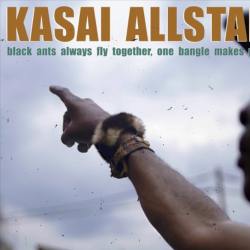
|
-
A decade and half ago, the Kasai Allstars were one of a handful of bands featured on Congotronics, and as a result, got swept up in the sudden burst of praise and hype surrounding label mates Konono #1, who seemed to benefit in particular from the attention. Suddenly, raw, relentless DIY sounds from the war-ravaged central African nation were to be found in hip vinyl shops in the west.
Their 2008 debut capitalizes on the Western popularity surrounding Konono #1. And the record showed the group, featuring musicians across multiple ethnic groups from as many other bands, engulfed in a wondrously monotonous thud; likembes, xylophones, hand drums, and empty gin bottles battled it out for space underneath hypnotic guitar curlicues as singers kicked up dust. Their newest recordings, Black Ants Always Fly Together, One Bangle Makes No Sound, come as something of a surprise departure. The thick, distorted likembes are still present, as are the pugnacious guitar patterns. Yet this is an altogether sweeter, less unyielding affair.
Bruce Miller reviews this new release, and you can listen to some songs and watch a video.
|

|
-
Singer and button-accordionist Celina da Piedade’s singing, playing and joyful charm is one of my absolute favourite things about Portuguese music. There’s no other singer/accordionist in Portugal like her, and in her very distinctive sunny way she captures the melodious richness of Alentejo song. Ao Vivo na Casinha is a recording of a live-streamed concert. It well captures her warmth and the beguiling, very Portuguese delicate grace-noting and slight vibrato of her singing. She’s deeply involved with the traditional singing of the Alentejo region where she lives, south of Lisbon and the river Tejo (Tagus). The material on this album is predominantly cante alentejano (Alentejo song), the vibrant songs in two-part unaccompanied polyphony still sung by village and town groups.
Read Andrew Cronshaw's review, listen to some of the music, and see a few videos made by other artists as part of a pandemic challenge thrown down by Celina da Piedade.
|

|
-
The Comoro Islands lie in the Indian Ocean to the north-west of Madagascar and are the location for renowned producer Ian Brennan's latest recording. The key to his approach is straightforward in principle, though not necessarily in practice. The aim is to document local music in situ with a minimum of interference, allowing the power of the music and song to be carried on its own terms, but of course things don't always go according to plan. Brennan and his wife and working partner Marilena Delli Umuhoza took six flights to get to Grand Comora, the largest of the islands, hoping to record a seldom heard double-reed pipe called the ndzumara, only to be told on arrival that the last living player of the instrument had recently died. Through word of mouth they made contact with another fine musician and singer called Soubi plus his friend and mentor Mmadi, both of whom they proceeded to record, and We are an island, but we're not alone is the result... Soubi and Mmadi present five songs each, on aspects of their everyday life, mainly accompanying themselves on the ndzendze, a box-zither related to the Malagasy valiha, and in Soubi's case also on the gambussi, a type of lute. The vocal styles of the two men are quite different. Mmadi is usually hotly impassioned while Soubi's voice is lilting and melodious.
Hear some of their original songs and read Mike Adcock's musings.
|

|
-
Zawierucha is a fine new band springing and evolving from Poland's village dance music revival. Its name means "turmoil" or "storm." Piotr Zgorzelski, player of basy (cello-sized folk bass), teacher of village dance and ex-member of the revival-pioneering Janusz Prusinowski Kompania, is joined, on violins and octave violins, by one of the revival's new young stars, fiddler Kacper Malisz from the Kapela Maliszów family trio, and Marcin Drabik, a leading fiddler in traditional, jazz and rock fields, plus Kamil Siciak on traditional and non-traditional drums and percussion. There's a great variety of approaches here, as the group takes interesting contemporary steps away from the typical traditional sound.
Listen to some songs and read all of Andrew Cronshaw's review.
|


|
-
If weird came in sizes from XS to XXXL, then The Best Japanese Music You’ve Never Heard would clock in somewhere around an XL on the scale. Not so alien it sounds as if it’s from another planet, but heading towards the edge of this one. It certainly goes for it from the start as singer Utsumi Eika teams with a cocktail full jazz band on a traditional minyo (folk) song, “Don-Don Bushi.” To Western ears it makes for a strange, unlikely pairing, a clash, really. but it sets the tone for tracks from different artists where Japanese rap meets folk, shamisen meets surf, and other artists carry the traditions into some deep and dusty musical territory, upping the strangeness quotient.
Read about and listen to the diverse music of Japan's folk-pop scene, collected by noted Asian music collector and provocateur, Paul Fisher.
Chris Nickson reviews the set.
The Best Japanese Music You've Never Heard is out latest selection for Music of the Month. Find out how to subscribe and get a copy of this new release.
|

|
-
Tindia are a five-piece all-female band based in Budapest and with their strong debut album they are following in the footsteps of others from their country. In Hungary there's a history of composers and performing musicians actively collecting folk songs and tunes by visiting rural areas, sometimes beyond the borders of Hungary itself, to capture musical treasures before they disappear. Bartók and Janácek took music they found on such trips as a starting point for many of their compositions and since then bands such as Muzsikás and Vujiicsics have collected and recorded material from different parts of Hungary and beyond. Now Tindia, who themselves have studied and collected folk music, have chosen to present traditional music of the Csángó people who live in Moldavia but originally travelled there from Hungary.
Listen to the music and read what Mike Adcock has to say.
|

|
-
Tuvan band Yat-Kha is basically singer/guitarist Albert Kuvezin and an assortment of other people. The thread that’s wound through the music is the man’s kargyraa overtone singing style, the sound mostly associated with Tuva. In his case though, it’s more of an undertone, so deep it’s in the sub-sub-basement and still falling towards the center of the earth. We Will Never Die, partly made before the pandemic and completed in isolation, is just Kuvezin and Sholban Mongush on igil (two-strong horsehair cello). It offers plenty of space for the voice, and also Kuvezin’s effective guitar work, while the cello fills out the music in a very satisfying way. There are traditional pieces, and plenty of surprises, including a cover of Black Sabbath’s “Solitude.”
Chris Nickson takes you to Tuva.
|
Support RootsWorld. Subscribe to Music of the Month.
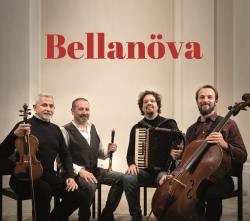
|
-
Stefano Valla and Daniele Scurati have been leading names in the piffero and accordion music of Quattro Province, the ‘four provinces’ of the Apennines – Genoa, Piacenza, Alessandria and Pavia, for decades. On a new self titled album, they are in company with two classical musicians - violinist Marcello Fera and cellist Nicola Segatta as the quartet Bellanöva. Composer Fera describes his first encounter with Valla and Scurati as "an epiphany." The result of their meeting is a set of traditional tunes and songs from Valla and Scurati’s repertoire given splendid arrangements by Fera. It’s a transformation that works beautifully; the quartet, on the face of it a sort of chamber-music group, makes something much bigger in sound, rich and magnificent; the accordion and cello working together like a whole orchestra, topped off by the eloquent violin and the thrilling graininess of the piffero.
Read all of Andrew Cronshaw's review and listen to this new music.
|

|
-
Pat Conte spent a decade and half on New York airwaves, spinning records from his own vast collection on a show titled "The Secret Museum of the Air." He presented US immigrants, Burmese harpists, Ugandan endingidi masters, or Andean charango experts. Yazoo Records released collections of his treasure trove in the 90s. Now, Brooklyn-based performance space and label Jalopy have helped keep Conte's work available. Aside from releasing an album of Conte's own music in 2010, they have brought us the first Secret Museum of Mankind collection in 23 years. Not surprisingly, it is well worth the wait. Here, we get exquisite flamenco, Greek solo bouzouki, Ghanaian highlife, Hindustani steel guitar and much more. Like many of the original volumes in the series, the music hops the globe; yet, because of the focus on guitar and guitar-adjacent instruments, the sounds here feel more homogenous than some of his other collections.
Read more about The Secret Museum of Mankind: Guitars Vol 1: Prologue to Modern Styles in Bruce Miller's review, listen to some of the music, and meet Pat Conte in an interview from 2000.
|

|
-
Piers Faccini creates with a quiet restlessness. His songs, painstakingly crafted, seem nonetheless to want to take him further on. He has collaborated with artists as far-flung as Vincent Segal, Ibrahim Malouf, Blick Bassy, and Mayra Andrade, as well as Ben Harper and Abdelkebir Merchane who are featured on his new album, Shapes of the Fall. He, and they all, are thinking, engaged artists with soul, helping to make the world smaller and bigger at the same time. Faccini has put together a bewitching mix of shapes. There are topical and poetic musings, songs of love, even a couple of foot stompers. A number of the tracks celebrates the irrepressible Maghrebbi roots of his Southern Italian patrimony, showcased in the magical mystery music (and musicians) of the Gnawa and other tribal keepers of North African traditions.
Carolina Amoruso take you to the Fall.
|

|
-
While so many of us look to lyrics when we observe how songs can tell stories, often as not the real stories are in the music itself. If it’s a collective improvisation, there might be a narrative arc. Songs based on drone often add layers, subtly suggesting a change only noticed when the listener is immersed. These additions build to climax, finally letting the listener loose as the sounds subside.
The music on Meril Wubslin’s Alors Quoi has stories to tell. This is due to a sense of slow, brooding tension in these tracks, as if they give off a warning. There’s an undercurrent of panic in these gorgeously repeated, often guitar-driven riffs. The vocals, sometimes in chorus, float over the minimal chords like ghosts slithering in and out of cracks in long-abandoned buildings.
Bruce Miller takes you on a sonic adventure.
|

|
-
There is something classic about the start of Samba Touré's new album Binga: a solitary electric guitar plays a repeated riff, then things begin to build as in turn an acoustic guitar, hand-drums, the lead vocal and finally backing vocals join the proceedings. It's an old device but in the right hands it can still draw you in and make you just want to stick around. It certainly works here... The title Binga refers to the region just south of the Sahara where Samba Touré grew up before moving to Bamako to find work. The songs - traditional and original - reaffirm his continuing connection with these roots and as he has said himself, “Even if it’s complicated or dangerous to travel to the north now, it’s still my homeland and always will be. I have a house there. It’s my culture and my heritage. This is my region and it felt right to name this album after it. It’s pure Songhai music.” Whilst the album begins and ends with traditional songs, the rest are originals, mostly songs commenting on social issues including education and migration.
Read Mike Adcock's review and listen to some of the music.
|
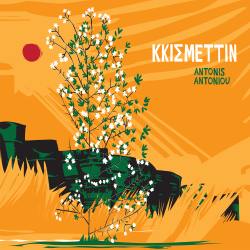

|
-
Antonis Antoniou is an old friend to many of our readers. His work is deeply rooted in the complicated musical and social traditions of Cyprus, where streets were literally divided by steel barrels to separate Turks from Greeks during some of the country's most difficult times. Kkisméttin (fate, destiny, kismet) was made during the pandemic lockdown we have all been living with, and Antoniou took this as an opportunity to create new songs that could speak in various ways about that loss of freedom, and its parallels in the rest of our lives.
The songs on the album are not blunt political instruments, but poetic references that cut slowly, but cut deep. He writes not in political screed, but in prose poetry that elicits the beauty of the island and the wonder of its diverse population.
Read Cliff Furnald's review and listen to some of the music.
The album is our Music of the Month selection for April, 2021
|

|
-
I hope by now the impression abroad that the only Portuguese roots music is fado has is known to be as false a stereotype as all Spanish music being flamenco, or all Americans cowboys. Portugal has a rich variety of regional rural traditional musics, and indeed the melodies of some, particularly those of Alentejo, have shaped the urban Lisbon fado. A unifying aspect of all these musics, though, and of the people in Portugal who perform and listen to them, is a great appreciation of melody, and warm, expressive singing. Sara Vidal is a Portuguese singer and harpist, and for all of her well-known work with many other ensembles, Matriz is her first solo album. It’s a collection of traditional songs from the Portuguese regions of Beira Alta, Beira Baixa, Alentejo, Algarve, Ribatejo, Trás-os-Montes, Minho and the archipelago of Madeira.
Read Andrew Cronshaw's review and listen to some of the music.
|

|
-
Langeleik is a form of table-top zither which, like the more widely known Hardanger fiddle, is a uniquely Norwegian instrument. The recordings in Høyre du, mann! - Langeleikopptak 1955-1983 are drawn from the archive of the Norwegian Collection of Folk Music at the National Library in Oslo, and celebrates the langeleik in 42 relatively short tracks. The langeleik goes back in time considerably further than the Hardanger fiddle and the instrument played on the track "Vals etter Arne Hasvoldseter," which is inscribed with the year 1524.
The CD contains a descriptive booklet, partly in English, which includes photographs of instruments and players. It seems that most of these archive recordings were made specifically for documentation, principally to capture traditional ways of playing before they disappeared altogether. The fact that most of the players heard in the earlier recordings on the album were in middle or old age at the time (the oldest, Ingeborg Lunde having been born in 1875) is perhaps an indication that the langeleik playing tradition was not being taken up by many from the younger generation.
Come explore the archive with Mike Adcock.
|
Support RootsWorld. Subscribe to Music of the Month.
Browse more reviews from
2021
2020
2019
2018
2017
2016
We Interupt Our Regularly Scheduled Magazine For This Important Announcement.
RootsWorld cannot survive without the support of our readers. If you want to hear great music and read great writers, then we need each listener and reader to contribute just a little to make it happen. Please join us!
Make a One Time Contribution Today!
|
$5.00
|
$10.00
|
$20.00
|
|
$40.00
|
$70.00
|
$100.00
|
Please contribute to our survival.
About RootsWorld: RootsWorld is a world music magazine started in 1993, pretty much at the dawn of the term "world music" as well as the pre-dawn of internet publishing (I suspect this was the first music magazine of any sort published on the www). Our focus is the music of the world: Africa, Asia, Europe, Pacifica and The Americas, the roots of the global musical milieu that has come to be known as world music, be it traditional folk music, jazz, rock or some hybrid. How is that defined? I don't know and don't particularly care at this point: it's music from someplace you aren't, music with roots, music of the world and for the world. OK?
All pages at RootsWorld are © 1992-2021 RootsWorld/ Cliff Furnald / FNI Multimedia Publishing, New Haven CT
The RootsWorld name is protected by US trademark law.
All picture and sound images are the property of the artists and record labels, and are protected by copyright. No file or part of a file may be used for any purpose, commercial or non-commercial, without the express written consent of RootsWorld or the other copyright owners.
About the use of sound files and copyright protections at RootsWorld
|
